- Home
- Daniel Quinn
The Story of B Page 16
The Story of B Read online
Page 16
I thought I saw where she was headed. I said, “Whereas, working with someone like me, you have to struggle to unseat these fundamental ideas and to replace them with others I’ve never heard of.”
“That’s right. When Christians began sending missionaries to ‘savage lands,’ they were faced with the same difficulty I have with you. The aborigines didn’t have any idea what the missionaries were talking about.”
“That’s true.”
“Charles and I are the first animist missionaries to your world—the world of Salvationist, revealed religions—Christianity, Islam, Judaism, Buddhism, Hinduism. There’s no blueprint for what we’re doing. No precedent, no catechism, no curriculum. That’s why it’s so … improvisational. We’re trying to develop the blueprint. We’re trying to figure out what works.”
“This will probably seem like a silly question, but … why? Why are you doing this?”
B drove for a minute in silence. Then: “You remember what B said: Vision is the flowing river.”
“Yes …?”
“The religions I just mentioned—the revealed religions—are fundamentally wed to our cultural vision, and I use the word wed advisedly. These religions are like a harem of sanctimonious wives married to a greedy, loutish sensualist of a husband. They’re forever trying to improve him, forever hoping to get his mind on ‘higher things,’ forever bawling him out and shaking their fingers at him, but husband and harem are in fact completely inseparable. These revealed religions clearly function as our ‘better half.’ They’re the highest expression of our cultural vision.”
“Yes, I suppose you could say that.”
“Here’s what Charles said next: ‘In our culture at the present moment, the flow of the river is toward catastrophe.’ Does that make sense to you?”
“Yes.”
“Then put it all together, Jared. Vision is the flowing river. The revealed religions of our culture are the highest expression of that vision, and the flow of the river is toward catastrophe.”
My mind boggled at this. When I failed to reply, Shirin shot me a glance from the corner of her eye and said, “You wanted to know why we’re doing this. Charles explained it the other night: Our objective is to change the direction of the flow, away from catastrophe. Nothing less will do the trick, Jared. Absolutely nothing.”
I shivered. “I think I understand why the crowds call B the Antichrist.”
She smiled and shook her head. “Do you know who the Baal Shem Tov was?”
“I have a general idea. He was a great Hasidic saint, sort of a Jewish Francis of Assisi, about five centuries later.”
“Close enough. Do you know the meaning of the name?”
“No.”
“A baal shem is a master of names—in other words, a magician. Baal Shem Tov means ‘master of the good name,’ which is to say a magician of the highest order, capable of wielding the name of God.”
“I see.”
“There once was a merchant who was afraid to travel to a nearby city, because the only route passed through a forest known to be inhabited by highwaymen. His wife said he should appeal to the Baal Shem Tov for help, but this just irritated the merchant, who didn’t believe the stories he’d heard about this supposed wonder-worker. His wife said, ‘Trust me. Go to the house of the Baal Shem Tov and slip his porter a few coins. The porter will let you know the next time his master is planning a trip through those woods, and you can go with him. No harm will come to you if you’re with the Baal Shem Tov.’ The merchant reluctantly took her advice and before long had an opportunity to travel with the Baal Shem Tov.
“When they reached the deepest, most dangerous part of the woods, the Baal Shem Tov called a halt so the horses could rest and graze. This stoppage terrified the merchant, but the Baal Shem Tov calmly took out his copy of the Zohar and began to read. Soon the branches alongside the road parted, and the robbers stepped out and approached, knives drawn. But when they were two or three paces away from the wagons, they suddenly started to shake uncontrollably. They didn’t know what to make of this, but they were in no condition to attack anyone, so back they went into the woods. After a few minutes they recovered and made a second attempt, with the same result: Before they could get close enough even to touch one of the horses’ noses, they were rendered helpless with palsy and forced to retreat. The merchant, cowering in his wagon, watched all this with amazement.
“When the Baal Shem Tov finally looked up from his book and gave the word to continue, the merchant threw himself at his feet and kissed his hand. ‘Now I understand,’ he said. ‘Now I understand why people call you the Baal Shem Tov!’
“The Baal Shem Tov frowned down at him and said, ‘So you think you understand that, do you? Believe me, my friend, you’re just beginning to understand!’”
The two visions
Once inside the park, B’s exhaustion seemed to slip away from her. She led the way and I followed, for all the world like a husband being towed through a shopping mall. I didn’t have the least idea what she was looking for, but she was certainly looking. When we finally stopped, it was in a spot that, for all I knew, might have been the same one we occupied the night before. We sat down facing a dusty clearing not much bigger than a dining-room table.
She said, “We have a lot to do here, Jared—a great journey to take—and I’m not sure I’m guide enough to see you through it. But I’ll do my best.”
I wanted to murmur a word of encouragement but decided against it. She reached in her purse and drew out of it our work of bricolage. Some reassembly was necessary, as the pen and the fuse were not snugly held in place alongside the film canister, and when this was done, she handed it to me and asked if I remembered what it was all about.
“The fossil represents the community of life,” I told her. “Animism is bound up with that community and resonates with it. The Law of Life, represented by the pen, is written in the community of life, and animism reads this law, as does science in its own way.”
“Excellent. I’ve called animism a religion, but there’s a very real sense in which animism-as-a-religion is an invention of Taker culture, an intellectual construct.”
“Why is that?”
“I told you that animism was once a universal religion on this planet. It’s still universal among Leaver peoples—peoples you identify as ‘primitive,’ ‘Stone Age,’ and so on. But if you go among these people and ask them if they’re animists, they won’t have the slightest idea what you’re talking about. And in fact if you suggest that they and their neighbors have the same religious beliefs, they’ll probably think you’re crazy. This is because, like neighbors everywhere, they tend to be much more aware of their differences than their similarities. It’s the same with your revealed religions. To you, Christianity, Judaism, Islam, Buddhism, and Hinduism look very different, but to me they look the same. Many of you would say that something like Buddhism doesn’t even belong in this list, since it doesn’t link salvation to divine worship, but to me this is just a quibble. Christianity, Judaism, Islam, Buddhism, and Hinduism all perceive human beings as flawed, wounded creatures in need of salvation, and all rely fundamentally on revelations that spell out how salvation is to be attained, either by departing from this life or by rising above it.”
“True.”
“The adherents of these religions are mightily struck and obsessed by their differences—to the point of mayhem, murder, jihad, and genocide—but to me, as I say, you all look alike. It’s the same among Leaver peoples. They see what’s different between them and I see what’s alike, and what’s alike is not so much a religion (as religion is understood by Christians, Jews, Muslims, Buddhists, and Hindus) as it is a religious vision of the world. There is in fact no such religion as animism—that’s the construct: animism as a religion. What exists—and what is universal—is a way of looking at the world. And that’s what I’m trying to show you here.”
“I understand … I guess.”
“Always keep in
mind what we’re about here, Jared. We’re here about visions, you and I. One vision is sweeping us toward catastrophe. This is a vision peculiar to a single culture, our culture, focused and sustained by the revealed religions of our culture during the last three thousand years. I’m trying to show you another vision, healthy for us and healthy for the world, that was embraced by hundreds of thousands of cultures through hundreds of thousands of years.”
“Okay,” I said. “But you can’t actually know how long it’s been embraced.”
“I think I can, Jared. Consider this: How long have people been living in accordance with the law of gravity?”
“With the law of gravity? Forever, of course.”
“How can you know that?”
“I suppose I know that because, if people hadn’t been living in accordance with the law of gravity, then they wouldn’t be here at all.”
“But they didn’t necessarily understand the law of gravity, did they? I mean, they couldn’t express it the way a physicist might.”
“No.”
“But they knew it was a law all the same. Step off the edge of a cliff and you fall—every time. Drop the rock and it falls on your toe—every time.”
“That’s right.”
“Now try this: How long have people been living in accordance with the Law of Life?”
“I don’t know.”
“The Law of Life is …?”
“The Law of Life is … ‘whatever fosters life.’”
“So try again, Jared: How long have people been living in accordance with the Law of Life?”
“From the beginning.”
“Why? How do you know that?”
“Because if they hadn’t been living in accordance with the law that fosters life, then they wouldn’t be here at all.”
“Good. But they didn’t necessarily understand that law, did they? They probably couldn’t have expressed it the way a biologist would.”
“No.”
“Nevertheless, they could know what they knew about the law of gravity—that it’s there. That a law is in place. They could know, for example, that infants must be taken care of till they can take care of themselves. They could know that abandoned infants die—every time. They could know that a lion will defend its kill—every time. They could know that you don’t necessarily have to be as fast as a deer to catch a deer. They could know that if you’re stalking any animal that can outrun you, you’d better be downwind of it. I could go on all night. I could go on for days and weeks, and I wouldn’t be able to list everything they would know just by the simple experience of living in that community through thousands of generations.”
“I’m sure you’re right. What I don’t see yet is the connection between this and animism.”
“What is animism, Jared?”
“I’m less and less sure as time goes on. As I understand it right now, it’s a vision. I suppose you mean a worldview, a weltan-shauung.”
“Yes, but I think I’ll stick with vision. This is what we’re about here: two visions, one vision that enabled us to live well and in harmony with the earth through millions of years, and another vision that has brought us to the verge of extinction and made us the enemy of all life on this planet in just ten thousand years.”
“Okay.”
“And what is the animist vision?”
“I don’t know. I have no idea.”
“Then tell me this: What is our vision, Jared—the Taker vision, the vision that has made us the master of the world and the enemy of life? Can you articulate it?”
“I can try.”
“Go ahead.”
“We’re the creature for whom the world was made, so we can do what we please with it. That’s a start.”
“Yes, that’s a good start. According to this vision, God seems to have little interest in the rest of the world.”
“That’s right. God cares about people. People are the big deal. People are what he made the universe for.”
“So the world was made for Man, and Man—What was Man supposed to do with the world?”
“He was supposed to rule it. It was given to him to rule.”
“But, oddly enough, the world wasn’t ready for him to rule, was it. Man was ready-made to rule the world but the world wasn’t readymade for him to rule it.”
“No, that’s true. I never noticed that in particular.”
“So what did Man have to do to make the world ready to rule?”
“He had to subdue it, conquer it.”
“That’s right. And he’s still at it, isn’t he. So, this is the Taker vision: The world was made for Man, and Man was made to conquer and rule it.”
“Yes.”
“What we’re looking for now, Jared, is the Leaver vision or the animist vision. Before we leave here today, you’ll have that, I promise you.”
Strategies: stable and otherwise
“I want you to understand that what I’m calling the Law of Life was not in any sense imprinted in the community of life by divine action. God or the gods didn’t give their creatures ‘good instincts’ that I’m now calling collectively the Law of Life. It didn’t happen that way. To posit such an action would be unparsimonious, a violation of Occam’s razor. You understand what I mean by that, don’t you?”
“Yes. You’re saying the Law of Life doesn’t have to be explained as a system of divine intervention any more than the laws of thermodynamics have to be explained as a system of divine intervention.”
“That’s right. A biologist would probably say that what I’m calling the Law of Life is just a collection of evolutionarily stable strategies—the universal set of such strategies, in fact. Do you know what an evolutionarily stable strategy is?”
“Madam,” I said, “I am a classicist, not a biologist. In school, I read Homer in the Greek and Cicero in the Latin. I can give you a discourse on Plato’s proof of the immortality of the soul—and a damned good one it is, too, if you accept his premises. But I haven’t the least idea what an evolutionarily stable strategy is.”
“All right. Let’s break it down into parts. A strategy in this context is just a behavioral policy. For example, yesterday I mentioned a behavioral policy that’s followed by lactating she-goats: ‘Suckle your own and no other.’ This is evolutionarily stable for goats because it can’t be improved on by any alternative strategy. For example, it could happen that some goats might follow a strategy of refusing to nurse any kids at all, including their own. But this will definitely have the effect of reducing their representation in the gene pool, so refusal to nurse will tend to disappear from the species. Similarly, some goats might follow a strategy of indiscriminate nursing—suckling any kid that comes along. But because this shortchanges their own kids, this too will have the effect of reducing their representation in the gene pool, so indiscriminate nursing will also tend to disappear. The only strategy that will not tend to disappear is ‘Suckle your own and no other.’ That’s why this particular strategy is evolutionarily stable: The normal process of evolution, natural selection, doesn’t eliminate it.”
“I understand. This is the Law of Life for goats not because God decided goats should behave this way but because, in any mix of strategies, goats that suckle only their own will tend to be better represented in the gene pool than any others. It’s actually a very elegant concept.”
“Science does occasionally produce an elegant concept,” she said with an mildly ironic smile. “I’m sure you understand that what is stable and unstable for one species isn’t necessarily stable and unstable for another species. For example, many birds are indiscriminate nursers. They’ll feed any chick that turns up in their nest, including chicks of other species.”
“Thus giving aid and comfort to the merry cuckoo,” I said, rewarding B’s surprised look with a mildly ironic smile of my own. “We classicists aren’t total ignoramuses,” I informed her. “The fool warns King Lear, ‘You know, Nuncle, the hedge-sparrow fed the cuckoo so long it had its head bit
off by its young.’”
“I’m glad to know that classicists aren’t total ignoramuses, Jared,” B said, giving me a smile so sweetly benevolent that, for one terrifying moment, I actually had to struggle to keep from grabbing her. Noticing nothing, she went on.
“I know you’ve heard Charles mention a colleague known as Ishmael. Though he didn’t use this terminology, Ishmael identified a set of strategies that appear to be evolutionarily stable for all species. He called this set of strategies the Law of Limited Competition, which he expressed this way: ‘You may compete to the full extent of your capabilities, but you may not hunt down your competitors or destroy their food or deny them access to food.’ In the miscalled ‘natural’ community (meaning the nonhuman community), you’ll find competitors killing each other when the opportunity presents itself, but you won’t find them creating opportunities to kill each other. You won’t find them hunting each other the way they hunt their prey; to do so would not be evolutionarily stable. Hyenas just don’t have the energy to hunt lions—calories gained by eliminating these competitors wouldn’t equal the calories spent in eliminating them—and attacking lions is not exactly a risk-free venture. In the same way, in the ‘natural’ community, you won’t find competitors destroying their competitors’ food—the payoff just isn’t big enough to make it worthwhile.”
“What would be the motive for destroying your competitors’ food?”
“If you destroy your competitors’ food, you destroy your competitors, Jared. Suppose, for example, that you’re a bird species that favors foods A, B, C, D, E, and F. Another bird species favors foods D, E, F, G, H, and I. That means you compete with them for foods D, E, and F. By destroying foods G, H, and I (which you don’t care for yourself), you can strike an important blow against them.”

 The Story of B
The Story of B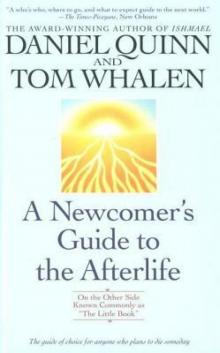 A Newcomer's Guide to the Afterlife: On the Other Side Known Commonly as the Little Book
A Newcomer's Guide to the Afterlife: On the Other Side Known Commonly as the Little Book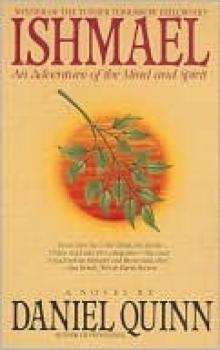 Ishmael: An Adventure of the Mind and Spirit
Ishmael: An Adventure of the Mind and Spirit CLONES: The Anthology
CLONES: The Anthology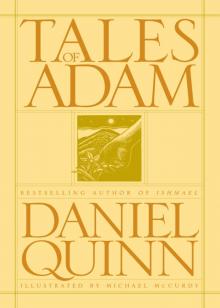 Tales of Adam
Tales of Adam The Holy
The Holy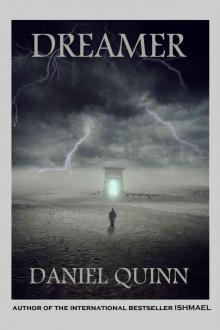 Dreamer
Dreamer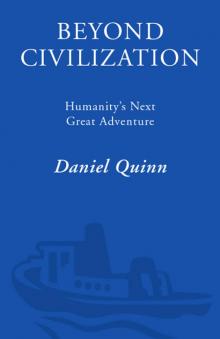 Beyond Civilization: Humanity's Next Great Adventure
Beyond Civilization: Humanity's Next Great Adventure After Dachau
After Dachau If They Give You Lined Paper, Write Sideways.
If They Give You Lined Paper, Write Sideways.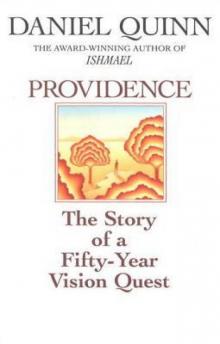 Providence
Providence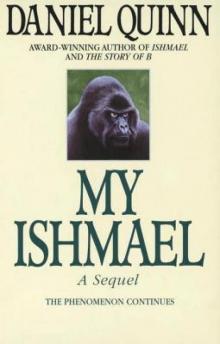 My Ishmael
My Ishmael Beyond Civilization
Beyond Civilization If They Give You Lined Paper, Write Sideways
If They Give You Lined Paper, Write Sideways Ishmael
Ishmael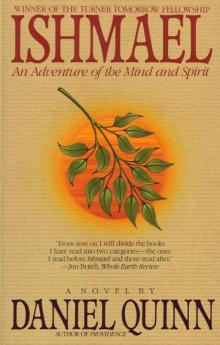 Ishmael i-1
Ishmael i-1 A Newcomer's Guide to the Afterlife
A Newcomer's Guide to the Afterlife